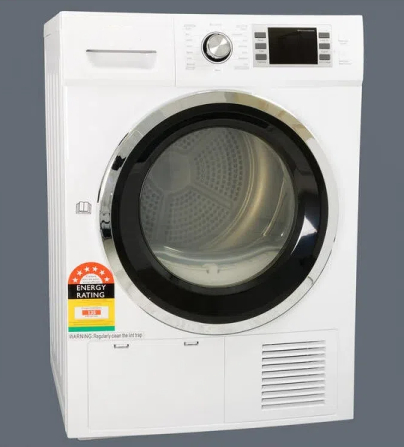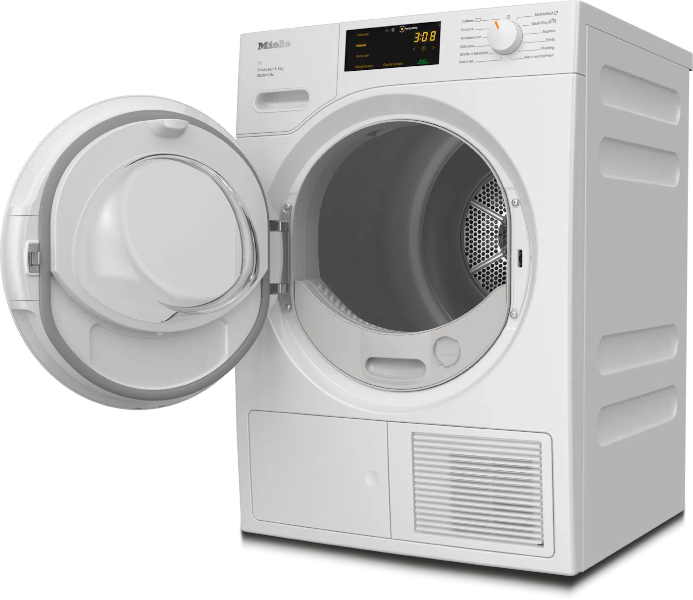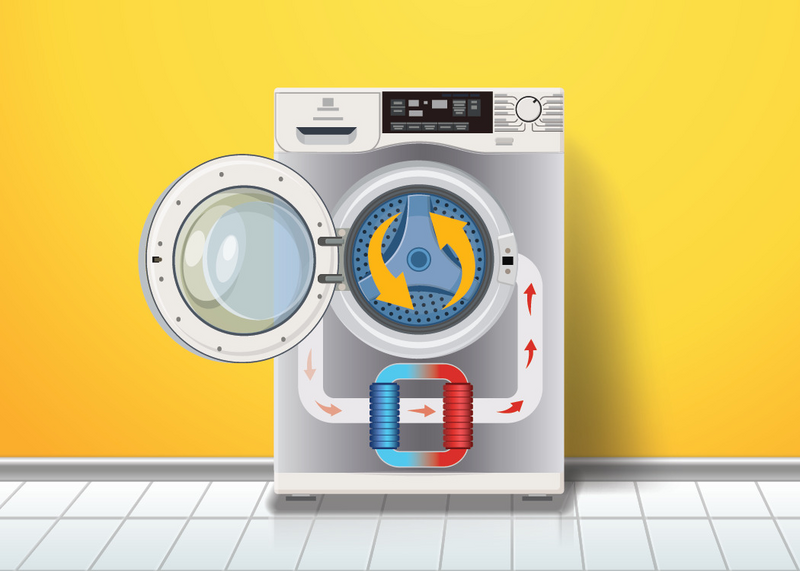
Content Menu
● Introduction to Electric Clothes Dryers
● The Basic Principle of Electric Clothes Dryers
● Key Components of an Electric Clothes Dryer
>> 1. Drum
>> 2. Heating Element
>> 3. Blower or Fan
>> 4. Thermostat and Temperature Controls
>> 5. Timer and Control Panel
>> 6. Moisture Sensors
>> 7. Lint Filter
>> 8. Vent and Exhaust System
● How an Electric Clothes Dryer Works: Step-by-Step Process
>> 1. Loading and Cycle Selection
>> 2. Heating Activation
>> 3. Air Circulation
>> 4. Tumbling Action
>> 5. Moisture Removal
>> 6. Temperature Regulation
>> 7. Moisture Sensing
>> 8. Cool Down and Cycle Completion
● Energy Efficiency in Electric Dryers
● Dryer Temperature Control and Fabric Care
● Troubleshooting Common Electric Dryer Issues
>> 1. Dryer Won't Start
>> 2. Clothes Not Drying Properly
>> 3. Excessive Noise
>> 4. Dryer Overheating
● Maintenance Tips for Electric Dryers
● The Future of Electric Clothes Dryers
● Conclusion
● Frequently Asked Questions
>> Q1: How long does a typical electric dryer cycle take?
>> Q2: Are electric dryers more energy-efficient than gas dryers?
>> Q3: How often should I clean my dryer's lint filter?
>> Q4: Can I stack my electric dryer on top of my washing machine?
>> Q5: How can I make my electric dryer more energy-efficient?
Introduction to Electric Clothes Dryers
Electric clothes dryers have become an indispensable appliance in modern households, offering convenience and efficiency in the laundry process. These machines have revolutionized the way we dry our clothes, saving time and effort compared to traditional line drying methods. In this comprehensive guide, we'll explore the inner workings of electric clothes dryers, their components, and how they efficiently dry our garments.
The Basic Principle of Electric Clothes Dryers
At its core, an electric clothes dryer works by circulating hot air through a tumbling drum filled with wet clothes. The combination of heat and mechanical action removes moisture from the fabrics, leaving them dry and ready to wear. While this concept seems simple, the technology behind it is quite sophisticated.
Key Components of an Electric Clothes Dryer
To understand how an electric dryer functions, it's essential to familiarize ourselves with its main components:
1. Drum
The drum is the large cylinder where clothes are placed for drying. It's typically made of coated steel or stainless steel and features small holes or perforations that allow hot air to circulate through the clothes.
2. Heating Element
The heating element is responsible for generating the hot air needed to dry clothes. In electric dryers, this is usually a coiled wire that heats up when electricity passes through it, much like the element in an electric oven.
3. Blower or Fan
The blower or fan circulates hot air through the drum and pushes moist air out through the vent.
4. Thermostat and Temperature Controls
These components regulate the temperature inside the dryer to ensure clothes are dried efficiently without being damaged by excessive heat.
5. Timer and Control Panel
The timer and control panel allow users to set the duration and type of drying cycle, as well as other features like temperature settings and special cycles for different fabric types.
6. Moisture Sensors
Many modern dryers are equipped with moisture sensors that detect the dampness of clothes and automatically adjust drying time to prevent over-drying.
7. Lint Filter
The lint filter captures loose fibers and debris from clothes during the drying process, preventing them from clogging the vent system.
8. Vent and Exhaust System
This system expels moist air and lint from the dryer to the outside of the home.

How an Electric Clothes Dryer Works: Step-by-Step Process
Now that we're familiar with the key components, let's walk through the drying process step by step:
1. Loading and Cycle Selection
The process begins when you load wet clothes into the drum and select the appropriate cycle and settings on the control panel.
2. Heating Activation
When you start the cycle, electricity flows to the heating element, causing it to heat up and warm the air inside the dryer.
3. Air Circulation
The blower or fan draws in room-temperature air and passes it over the heating element. This hot air is then circulated through the tumbling drum.
4. Tumbling Action
The drum rotates, tumbling the clothes. This mechanical action helps to separate clothes, allowing hot air to circulate more effectively and evenly among the garments.
5. Moisture Removal
As hot air passes through the clothes, it causes the water in the fabrics to evaporate. The moist air is then pushed out through the exhaust system.
6. Temperature Regulation
Throughout the cycle, the thermostat monitors the temperature inside the dryer. It cycles the heating element on and off to maintain the desired temperature and prevent overheating.
7. Moisture Sensing
In dryers equipped with moisture sensors, these devices continuously monitor the dampness of the clothes. When the clothes reach the desired dryness level, the sensors signal the control panel to end the cycle.
8. Cool Down and Cycle Completion
Many dryers include a cool-down period at the end of the cycle, where clothes are tumbled in cool air to reduce wrinkling and make them more comfortable to handle.
Energy Efficiency in Electric Dryers
Energy efficiency is a crucial consideration in modern electric dryers. Manufacturers have implemented various technologies to reduce energy consumption:
1. Improved insulation to retain heat
2. More efficient heating elements
3. Advanced moisture sensors for precise cycle termination
4. Energy-saving modes and cycles
5. ENERGY STAR certification for qualifying models

Dryer Temperature Control and Fabric Care
Different fabrics require different drying temperatures to prevent damage and maintain quality. Most electric dryers offer multiple temperature settings:
- High heat: For heavy fabrics like towels and jeans
- Medium heat: For everyday items like t-shirts and sheets
- Low heat: For delicate items and synthetics
- Air fluff: Uses no heat, ideal for freshening clothes or removing dust
Modern dryers often include specialized cycles for specific fabric types, such as wool, silk, or activewear, ensuring optimal care for various garments.
Troubleshooting Common Electric Dryer Issues
Even with regular maintenance, electric dryers can sometimes encounter problems. Here are some common issues and their potential causes:
1. Dryer Won't Start
- Check the power supply and circuit breaker
- Ensure the door is fully closed
- Verify that the start button is functioning properly
2. Clothes Not Drying Properly
- Clean the lint filter and check for vent blockages
- Avoid overloading the dryer
- Inspect the heating element for damage
3. Excessive Noise
- Check for loose items in the drum or pockets
- Ensure the dryer is level on the floor
- Inspect drum support rollers and axles
4. Dryer Overheating
- Clean the vent system thoroughly
- Check the cycling thermostat and high-limit thermostat
- Inspect the heating element for proper function
Maintenance Tips for Electric Dryers
Regular maintenance can extend the life of your electric dryer and ensure optimal performance:
1. Clean the lint filter before or after each use
2. Inspect and clean the vent system annually
3. Wipe down the drum interior periodically
4. Check and clean moisture sensors
5. Ensure proper leveling of the dryer
6. Inspect the door seal regularly for wear or damage
The Future of Electric Clothes Dryers
As technology advances, we can expect to see further improvements in electric dryer design and functionality:
- Enhanced energy efficiency
- Smart features and connectivity
- More precise moisture sensing and drying algorithms
- Eco-friendly materials and manufacturing processes
- Integration with home automation systems
Conclusion
Electric clothes dryers have come a long way since their inception, evolving into sophisticated appliances that offer convenience, efficiency, and fabric care. By understanding how these machines work and following proper maintenance practices, you can ensure that your electric dryer serves you well for years to come, keeping your clothes fresh, dry, and ready to wear with minimal effort.

Frequently Asked Questions
Q1: How long does a typical electric dryer cycle take?
A1: A typical electric dryer cycle can take anywhere from 30 minutes to an hour, depending on the load size, fabric type, and moisture level of the clothes. Some heavy-duty cycles may take longer, while quick-dry options for small loads can be shorter.
Q2: Are electric dryers more energy-efficient than gas dryers?
A2: Generally, gas dryers are more energy-efficient and have lower operating costs than electric dryers. However, the initial cost of gas dryers is usually higher, and they require a gas line connection. Electric dryers are often more convenient to install and maintain, especially in homes without existing gas connections.
Q3: How often should I clean my dryer's lint filter?
A3: You should clean your dryer's lint filter before or after every load. This simple habit helps maintain the dryer's efficiency, reduces energy consumption, and minimizes the risk of fire hazards associated with lint buildup.
Q4: Can I stack my electric dryer on top of my washing machine?
A4: Many electric dryers can be stacked on top of compatible washing machines, but this depends on the specific models. You'll need a stacking kit designed for your particular appliances. Always consult the manufacturer's guidelines and consider professional installation for safety.
Q5: How can I make my electric dryer more energy-efficient?
A5: To improve your electric dryer's energy efficiency:
- Clean the lint filter and vent system regularly
- Use the moisture sensor settings if available
- Dry full loads, but avoid overloading
- Use the appropriate heat setting for each load
- Consider using dryer balls to improve air circulation
- Perform regular maintenance to keep the dryer running optimally












